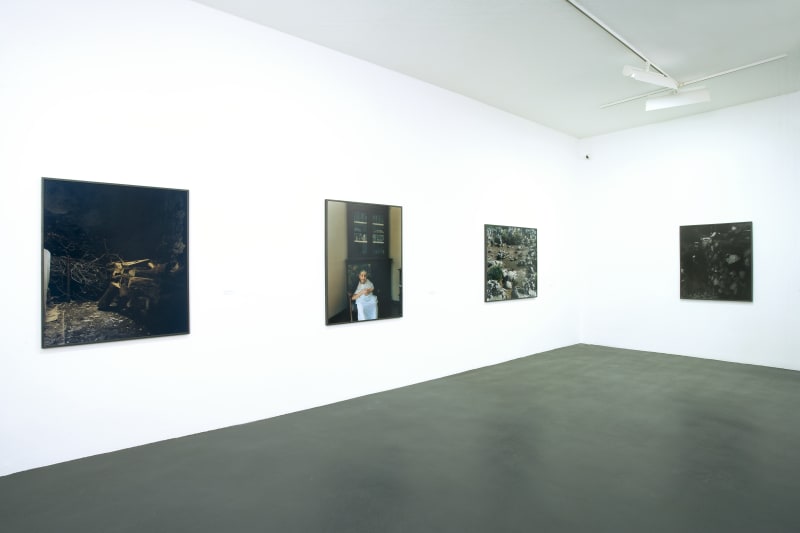Galerie Nathalie Obadia is pleased to organize the first exhibition of Patrick Faigenbaum.
A set of images made between 1998 and 2008 in Sardinia in the city of Santulussurgiu will be presented while the Museum of Grenoble will dedicate an important retrospective to the artist, from November 25, 2008.
This will be the occasion for the publication of a book on the work done in Sardinia, the second part of a triptych, the first of which was a portrait of the city of Tulle. The last part will be devoted to the work done for more than a year in a Kibbutz in Israel, which will be the subject of an exhibition at the Kunstmuseum in Bochum (Germany) in dialogue with the artist Penny Yassour, who lives and works in this same Kibbutz.
Patrick Faigenbaum is a major artist of the contemporary photographic scene. His works are present in the most important public and private collections, including the Metropolitan Museum of Art, New York and the MNAM, Centre Pompidou.
Patrick Faigenbaum's work is outside the field of the immediate contemporary and factual. He is at the heart of the pictorial tradition like another photographer, Jeff Wall. He made his name in the early 1980s with a series of black and white portraits of Italian aristocratic families. Initially a portraitist, he sought out his characters in a timeless relationship, then he began portraits of cities, of nature, as has just been the case with the City of Tulle.
Jean-François Chevrier, Patrick Faigenbaum's long-time accomplice, is the one who knows best how to talk about the artist's approach:
"We say in French that the portraitist camps his characters. This applies to literary description as well as to the work of the painter. The expression designates an energy and a certainty of line. It also contains the idea of an interdependence of the figure and the place. It induces a plastic (sculptural) conception of the body in space. Faigenbaum camps his figures: he gives them a place and a stature, a ground and a stable frame."
"The very notion of character evokes a narrative, a story, a work of memory. But Faigenbaum does not narrate, he prefers to suggest or, at the very least, produce the beginnings of a narrative."
Since his series of portraits of Italian families, Patrick Faigenbaum has been working simultaneously in black and white and in color. Jean-François Chevrier explains: "The alternation of black and white and color signals the coexistence of two worlds that correspond to two eras, now simultaneous. Color came after the family portraits, when Faigenbaum began to take an interest in urban news. But black and white, that is to say the gray, the play of values, persists. It is the domain and the source of chiaroscuro, the condition for the apprehension of bodies in the atmospheric volume. It gives to the air this weight of ashes which favors the modulation of the light and the modeling of the forms. More abstract than color, it discreetly introduces the fantastic into the plausible, if not truthful, image of the everyday."
Excerpts from the text by Jean-François Chevrier, "Patrick Faigenbaum Fotografias, 1973-2006, Centro de Arte Moderna José de Azeredo Perdigão - Fundação Calouste Gulbenkian, Lisbon

